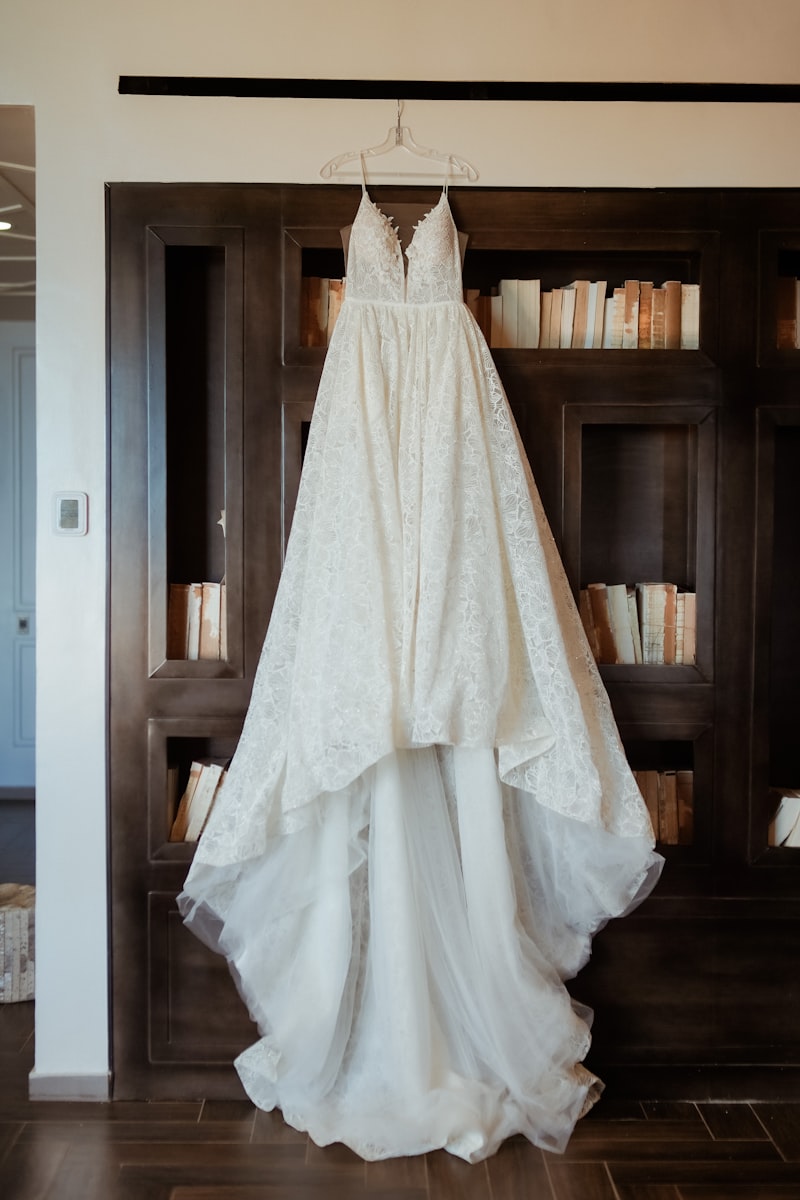Exploring Artisan Craftsmanship in Historical Bridal Fashion: A Timeless Legacy
Exploring Artisan Craftsmanship in Historical Bridal Fashion: A Timeless Legacy
Introduction to Artisan Craftsmanship in Bridal Fashion
The world of bridal fashion is a captivating realm where tradition meets artistry. Artisan craftsmanship plays a pivotal role in shaping the aesthetics of historical bridal attire, marrying intricate designs with cultural significance. This article delves into the rich history of bridal fashion, highlight the importance of artisan craftsmanship, and explore how it has evolved over the centuries.
The Roots of Bridal Fashion
Bridal fashion dates back centuries, with each era contributing unique styles and influences. From the simple white gowns of the Victorian era to the extravagant creations of the 21st century, bridal fashion is a reflection of societal norms, cultural practices, and artistic expression. The early bridal gowns were often made by skilled artisans who poured their heart and soul into every stitch.
Significance of Artisan Craftsmanship
Artisan craftsmanship refers to the skilled handmade processes that involve traditional techniques passed down through generations. In historical bridal fashion, this craftsmanship is essential, as it not only enhances the quality of the garments but also embeds stories and traditions into the fabric.
| Historical Era | Notable Features | Craftsmanship Techniques |
| Victorian Era | Elaborate lacework, high collars | Hand embroidery, fabric manipulation |
| 1920s Roaring Twenties | Flapper-inspired, beaded embellishments | Hand beading, draping |
| Modern Era | Simplified silhouettes, mix of vintage/recent styles | Digital embroidery, eco-friendly materials |
Iconic Historical Bridal Fashion Styles
The Victorian Bride
The Victorian era (1837-1901) marked a significant shift in bridal fashion. Queen Victoria’s choice of a white wedding gown set a new standard for brides. Victorian bridal gowns featured intricate lacework, corseted silhouettes, and long trains, often adorned with handcrafted details such as hand embroidery and fabric manipulation. The artisan craftsmanship of this era emphasized a refined elegance that is still sought after today.

The 1920s Flapper Style
During the 1920s, brides began to embrace more relaxed silhouettes, inspired by the flapper movement. Beaded embellishments and fringe became popular, showcasing the freedom and rebellion of the era. Artisans in this decade experimented with hand beading and draping techniques to create dresses that exuded glamour and sophistication.
The Modern Bride
Moving into the 21st century, bridal fashion has seen a revival of historical influences while integrating modern elements. Today’s brides often opt for unique designs that reflect their personal style, ranging from vintage lace to contemporary minimalist aesthetics. Artisan craftsmanship continues to thrive as many designers prioritize hand-made processes, eco-friendly materials, and sustainable practices.
The Influence of Culture on Bridal Fashion
Bridal fashion is not only shaped by historical events but also influenced by cultural practices. Across the globe, different cultures have their unique bridal fashion statements that encapsulate their traditions and values.
East Asian Bridal Traditions
In East Asian cultures, such as Chinese and Japanese weddings, the attire is often rich in symbolism and color. For instance, the traditional Chinese qipao uses bright red colors, often intricately embroidered by skilled artisans. The craftsmanship involves elaborate stitching techniques that depict good fortune and happiness.
Western Cultures’ Variations
In contrast, Western cultures have primarily leaned towards white and off-white gowns. However, variations exist even within these cultures, such as the use of vibrant colors in Indian bridal fashion. Indian brides often wear intricately woven saris or lehengas embellished with gold thread and precious stones, showcasing the artisan's meticulous work.
The Revival of Artisan Techniques
As the world becomes increasingly focused on sustainability, there has been a resurgence in artisan craftsmanship within bridal fashion. Modern brides are opting for bespoke dresses made by artisans who value traditional techniques over mass production. This not only provides a unique gown but also supports local craftsmanship and economies.
How to Choose a Bridal Dress with Artisan Craftsmanship
When searching for a bridal gown that embodies artisan craftsmanship, consider the following tips:
- Research Designers: Look for designers known for their handmade practices.
- Understand Materials: Opt for natural fabrics that showcase artisanal techniques.
- Seek Customization: Consider a bespoke gown that reflects your personal style while supporting artisan craftsmanship.
- Ask About Techniques: Inquire about the specific craftsmanship techniques used in the making of the gown.
The Future of Artisan Craftsmanship in Bridal Fashion
The future of artisan craftsmanship in bridal fashion looks bright as more brides seek unique, sustainable, and meaningful attire. Designers are increasingly recognizing the importance of preserving traditional techniques while infusing them with contemporary designs. This fusion not only respects the past but also resonates with modern values of individuality and sustainability.
Conclusion
Artisan craftsmanship is at the heart of historical bridal fashion, weaving together stories of love, culture, and artistry. As we move forward, it is vital to embrace and support the skilled artisans who dedicate their lives to preserving these traditions. Whether you are planning your wedding, exploring fashion history, or simply appreciating the beauty of bridal attire, remember the significance of craftsmanship that goes into every gown. As brides and grooms of today, promoting the values of artisan craftsmanship will ensure that these rich traditions continue to flourish for generations to come.
In summary, the journey through artisan craftsmanship in historical bridal fashion reveals not just the artistry behind the gowns but also a deep respect for heritage and sustainability. So, take the time to choose thoughtfully, appreciate the details, and remember, every dress has a story to tell.